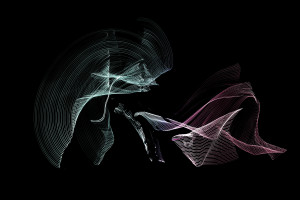Choreutics has always been my favorite book by Rudolf Laban. Since first reading parts of it as an undergraduate, it has inspired and mystified me by its occasional and seemingly abrupt shifts between systematic description and cosmic speculation. Laban hints at a deeper significance in human movement, but how he gets from A to B is elusive, thought-provoking, and exciting.

My most recent re-reading was occasioned by leading a correspondence course on Choreutics, accompanied by 21 curious and acute readers. I have not dispelled all mysteries as the result of this experience, but I have come to terms with what Laban was attempting to do. And I would like to encourage all students of movement to read this seminal work. Because what Laban was attempting to do was to shed light on an ephemeral, omnipresent, and little considered aspect of human life – body movement. And his work should be seen to be as ground-breaking and significant as Sigmund Freud’s explorations of the human psyche.
Great thinkers must also be great story-tellers. That is, they must find some way to convey what they perceive in terms that can be grasped by others. Freud’s approach was to divide the human psyche into three parts: id, ego, and super-ego. These are virtual or symbolic structures, for there is no part of the human body or brain that can be identified as an id, an ego, or a super-ego. Yet these represent different aspects of psychological function and serve to explain, at least in part, why people act as they do.
Laban’s approach is to divide human movement into two parts: choreutics (space) and eukinetics (effort). His mode of representation is geometrical – for patterns and sequences of both space and effort are coded on three-dimensional models. These are both literal and virtual. Movement in space can be captured as linear lines and shapes mapped on a 3-D crystalline grid. Kinetic energy is less tangible, and Laban’s representations are more abstact. Effort is a “fluid shadow.” Sometimes it flows seamlessly from inside to outside and outside to inside, like a lemniscate. Sometimes it circulates freely, twisting and untwisting. Sometimes kinetic energy becomes knotted and stuck….
Like Freud’s psychological constructs, the kinesphere and dynamosphere are symbolic structures. There is no geometric grid surrounding the mover, no inner cube of dynamic energies. Laban’s geometrical models represent different aspects of the human movement experience and serve to explain, at least in part, how and why people move as they do.
